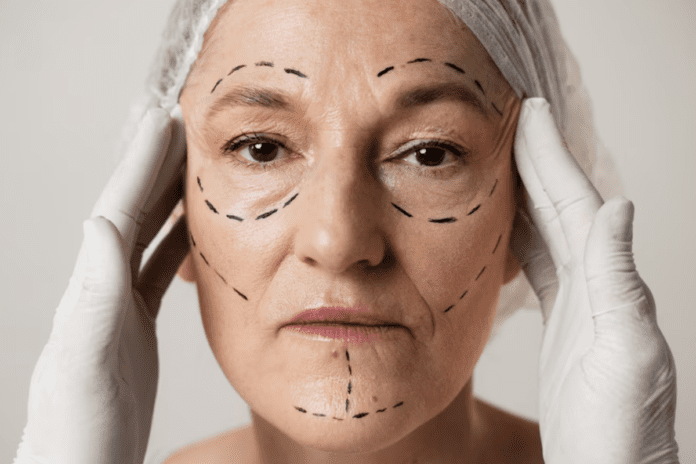As we age, our aesthetic goals and the procedures best suited to achieve them can change significantly. Skin elasticity decreases due to reduced collagen production from the mid-20s. Hence, more invasive procedures like facelifts and neck lifts are required in later years. According to Shah Aesthetic Surgery, the extent of the facelift often varies with age.
Selecting the right cosmetic procedure requires considering both age and individual aspirations. This blog post guides you in choosing appropriate aesthetic procedures based on different life stages.
In Your 20s – Subtle Enhancements
Individuals in their 20s often seek subtle enhancements to refine their appearance and boost self-confidence. Breast augmentation is very popular among women trying to enhance their breast shape and size. According to the American Society of Plastic Surgeons, augmentation of breasts was the most popular process among Gen Z in 2023.
This period is also ideal for minimal treatments like dermal fillers and Botox. These treatments provide preventative measures against wrinkles and fine lines. People undergoing these treatments can set a strong foundation for maintaining youthful skin in later years.
However, rhinoplasty, or nose reshaping, is also popular in this age group. Approximately 11,698 surgeries have been performed in 2022, reported ASPS.
In Your 30s – Addressing Early Signs of Aging
In your 30s, the focus often shifts to addressing signs of early aging while ensuring a youthful appearance. Mommy makeovers, which combine procedures like breast lifts and tummy tucks, help restore the body after pregnancy. Additionally, non-surgical skin treatments like chemical peels and laser resurfacing can effectively address early aging signs and improve skin texture.
Chemical peels need applying a solution of acids that removes the skin’s outer layers. Laser resurfacing, on the contrary, utilizes ablative lasers to get rid of the damaged skin layers. The process also requires heating the underlying layers to stimulate collagen production. They can address the physical changes brought about by family life.
In Your 40s – Comprehensive Rejuvenation
By the 40s, more comprehensive rejuvenation procedures become common as signs of aging become more pronounced. Facelifts saw an 8% increase in demand in 2023 as reported by Bloomberg. This is particularly popular among individuals in this age range who want to address sagging skin and deep wrinkles.
Eyelid surgery, clinically known as, blepharoplasty is also frequently performed to rejuvenate the eye area for a youthful appearance. Fat transfer procedures, which enhance volume in areas like the face and hands where fat loss occurs, are also beneficial. These procedures can help individuals in their 40s effectively maintain a refreshed appearance.
In Your 50s and Beyond – Restoring Youthfulness
For those in their 50s and beyond, the focus often shifts to restoring youthfulness and addressing significant aging signs. Procedures like neck lifts address muscle banding and sagging skin in the neck space. While brow lifts reduce forehead wrinkles and lift sagging brows. The overall process can dramatically improve appearance.
Full face rejuvenation combining facelifts, eyelid surgery, and neck lifts, offers a holistic approach to aging with grace. Facelifts and neck lifts are common among this demographic, as they effectively address loose skin and muscle tone loss. A study published in 2024 highlights that combining lower blepharoplasty with mid-facelifts gives optimal results in face rejuvenation. Additionally, facial fat grafting and skin resurfacing treatments can help rejuvenate the skin’s texture and volume.
Key Considerations Across All Ages
Regardless of age, choose an experienced and qualified board-certified plastic surgeon to ensure the best outcomes and minimize risks. Realistic expectations, health status, and personal objectives should all influence the decision-making process. A plastic surgeon consultation can offer tailored advice based on specific requirements and intended outcomes.
FAQs
How much time does it take to recover from a facelift?
After a facelift, recovery usually involves two to four weeks. Within the first few weeks, patients should anticipate a decrease in swelling and bruises. Complete results will become apparent after several months. However, most people can return to normal activities and work within two to four weeks post-surgery.
Can aesthetic surgery address and permanently alter genetic traits?
Indeed, certain genetic traits can be changed through procedures like chin augmentation and rhinoplasty. These procedures are frequently performed on people who want to maintain balance in their facial attributes. However, these changes are superficial and do not alter the underlying genetic code. It implies that any genetic traits can still be passed onto offspring.
How long are dermal fillers functional?
Depending on the type used, dermal fillers can have effects that last anywhere from six months to two years. To maintain results, routine maintenance procedures are required. Moreover, skincare routines, lifestyle choices (like sun exposure and smoking), and metabolism can influence the longevity of dermal fillers.
Are cosmetic procedures safe for senior adults?
Yes, older adults can safely undergo aesthetic surgery provided they receive a proper health evaluation. Most cosmetic procedures, for example, liposuction, eyelid surgery, and facelifts are safe for seniors. However, procedures like abdominoplasty (tummy tuck) may have slightly higher complication rates in this age group. To protect patients, surgeons evaluate both individual risks and general health.
To conclude, knowing how various treatments can help you achieve your changing goals is essential. This can help you choose the best aesthetic procedure for your stage of life. You can make informed decisions and get the desired aesthetic outcomes by staying informed and seeking professional advice.










